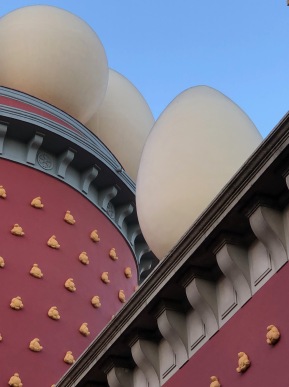
Lightly tethered to the earth
by Elizabeth Dunford
My mother dreams of dancing,
has swapped tartan pyjamas
for a taffeta ballgown,
fluffy slippers for silver slingbacks,
and is waltzing with my father,
who in life was heavy-footed,
no sense of rhythm at all.
I dream of walking aids, wheelchairs,
hospital waiting rooms.
My mother dreams of strolling
by a mountain lake in Rajasthan,
on honeymoon with my father
— so handsome in his white suit —
Dad, who in the wedding photograph
is pale, bespectacled, losing his hair.
I dream of the step, kerb, rug
that might trip, break a bird-frail bone.
My mother dreams of floating
upwards through azure air
hand in hand with Dad,
like lovers in a Chagall painting,
and when she wakes,
looks through the window,
smiles in recognition: a sky
of cloudless cornflower blue.
PAINTING: Lovers Over Saint Paul by Marc Chagall (1970).

NOTE FROM THE AUTHOR: My mother is 94 and tells me that she often takes a while, on waking, to disentangle dreams from reality. It is certainly true that her memories of the distant past are much more vivid than what happened yesterday. She recalls student balls in Dublin in the late 1940s and her marriage in Bombay in 1955 in colourful detail. My father died a few years ago, but to her he is still very present. I’ve written quite a few poems about them both in the past few years, probably in an attempt to process my own feelings about loss.
PHOTO: The author (left) and her mother (October 2023).

ABOUT THE AUTHOR: Elizabeth Dunford has been published in The Cannon’s Mouth, Snakeskin, Silver Birch Press, Green Ink, and My Happy Place (Nottingham Writers Studio). Her articles and book reviews have been published in Lapidus Journal and in NAWE’s Writing in Education. She won second place in the Carers UK poetry competition. Interested in the relationship between writing and well-being, she holds an MSc in Creative Writing for Therapeutic Purposes from the Metanoia Institute. She was born in India, grew up in Northern Ireland, and has lived in Nottingham, England, for over 30 years.























